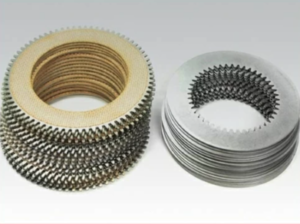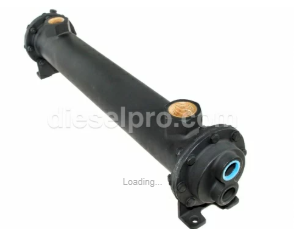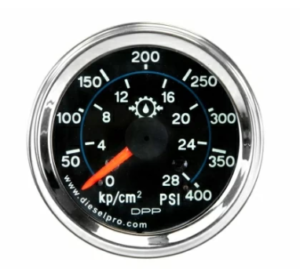
Parts Catalog for Twin Disc MG5090A Marine Transmissions
Overhaul Plate Kit For Twin Disc MG5090A Marine Transmission
Gasket Kits For Twin Disc MG5090A Marine Transmission
Introduction to the MG-5090A Marine Transmission System
The Twin Disc MG-5090A marine gear is a precision-engineered marine transmission designed for medium-duty commercial vessels, fishing boats, and patrol craft. It combines hydraulic clutch operation with a robust gear reduction system to offer smooth shifting, reliable torque transfer, and long service intervals in demanding maritime conditions.
At the heart of the MG-5090A is a set of interrelated components, each engineered for efficiency, durability, and maintainability. A comprehensive understanding of these internal systems—how they operate, what role they play, and how they interact—is essential for proper service, troubleshooting, and overhaul work.
Whether you’re replacing clutch discs, troubleshooting shifting issues, or performing preventive maintenance, this overview provides a detailed look at every major subassembly in the MG-5090A.
Input Shaft and Damper Plate in the Twin Disc MG-5090A Marine Gear
The input shaft and damper plate serve as the transmission’s entry point for engine torque. These two components work together to receive rotational energy from the engine flywheel and transfer it to the clutch assembly.
Input Shaft Functions:
- Connects directly to the engine flywheel via the damper plate.
- Transmits rotary motion into the gearbox.
- Contains oil passageways or splines to accommodate clutch engagement mechanisms.
Damper Plate Characteristics:
- Bolted to the engine flywheel and connected to the input shaft.
- Equipped with spring-loaded mechanisms to absorb torsional vibrations.
- Helps reduce gear chatter, especially during low-speed operation or shifting.
Service Considerations:
- Vibration or Clunking: May indicate worn damper springs or misalignment.
- Input Shaft Seal Wear: Can result in oil leaks or loss of internal pressure.
- Alignment Checks: Misalignment during installation can cause spline damage or abnormal clutch wear.
The input assembly’s integrity is critical, as any vibration, imbalance, or torque loss here will cascade through the transmission and impact performance.
Forward and Reverse Clutch Pack Assemblies in the Twin Disc MG-5090A Marine Gear

The MG-5090A uses two separate clutch packs—one for forward and one for reverse engagement. These hydraulically actuated clutches determine the direction of output rotation and allow the operator to shift between forward, neutral, and reverse.
Clutch Pack Components:
- Friction Plates: Steel discs lined with friction material, responsible for torque transmission.
- Steel Separator Plates: Plain metal discs positioned between friction plates.
- Apply Pistons: Use hydraulic pressure to compress the clutch stack.
- Return Springs: Release the clutches when hydraulic pressure is removed.
Clutch Pack Operation:
- Hydraulic pressure is directed to the forward clutch pack to engage forward propulsion.
- Hydraulic pressure is directed to the reverse clutch pack to engage reverse propulsion.
- Only one clutch pack is engaged at a time to prevent transmission lock-up.
Wear Indicators and Issues:
- Slipping: Commonly caused by worn friction material or improper hydraulic pressure.
- Harsh Shifting: May be due to sticking pistons or warped separator plates.
- Debris in Hydraulic System: Often traced back to disintegrating friction plates.
Regular inspection of the clutch packs is a key part of preventative maintenance. Rebuilding clutch packs requires attention to clearances, torque specs, and hydraulic sealing integrity.
Planetary Reduction Gear Set in the Twin Disc MG-5090A Marine Gear
The planetary reduction gear assembly is what transforms high engine RPM into usable torque at the propeller shaft. It’s the core mechanism behind the “reduction” in reverse-reduction marine transmissions.
Gear Set Composition:
- Sun Gear: Located at the center of the gear set, connected to the clutch hub.
- Planet Gears: Surround the sun gear and rotate on their own axes.
- Ring Gear: The outermost gear that meshes with the planet gears.
- Carrier: Holds the planet gears and delivers output torque to the output shaft.
Reduction Ratio:
The MG-5090A typically features reduction ratios such as 2.00:1, 2.50:1, or similar. This means the output shaft rotates once for every 2 or 2.5 rotations of the input shaft—ideal for propeller efficiency.
Maintenance Considerations:
- Gear Tooth Wear: Look for pitting or spalling on teeth, which indicates fatigue.
- Backlash Testing: Excessive backlash can lead to vibration and noise.
- Lubrication: Requires clean and properly pressurized transmission oil for longevity.
The planetary gear set is highly durable but must be protected from contamination and operated within torque limits.
Oil Pump and Filtration System in the Twin Disc MG-5090A Marine Gear
The hydraulic oil pump is the heart of the MG-5090A’s internal pressure system. It supplies hydraulic oil to actuate clutch pistons and lubricate internal components. This subsystem is what enables smooth engagement and transmission longevity.
Pump Type:
- Gear-Driven Pump: Mounted internally and driven by the input shaft.
- Supplies Oil To:
- Forward and reverse clutch pistons
- Lubrication channels
- Oil cooler
- Control valves
Filtration System:
- Suction Screen: Protects the pump from large debris.
- Spin-On Oil Filter: Captures fine contaminants and particles.
Symptoms of Oil Pump Problems:
- Delayed Shifting: Indicates low hydraulic pressure or worn pump gears.
- Overheating: May result from restricted oil flow.
- Noisy Operation: Could signal cavitation or air entrainment.
Regular oil changes, filter replacements, and periodic pressure testing are essential to oil system health.
Oil Cooler Assembly in the Twin Disc MG-5090A Marine Gear

The MG-5090A is designed to maintain optimal operating temperatures through a dedicated oil cooling system. Continuous thermal management prevents clutch degradation, viscosity breakdown, and metal expansion.
Cooling Methods:
- Raw Water to Oil Cooler: Common on vessels using seawater for cooling.
- Fresh Water to Oil Cooler: Used in closed-loop systems with a separate freshwater circuit.
Cooler Function:
- Removes heat from hydraulic oil during operation.
- Maintains oil at ideal viscosity for clutch actuation and gear lubrication.
Inspection Points:
- Check for Leaks: Especially at hose fittings and cooler body.
- Monitor Oil Temperature: Over 180°F consistently could indicate flow restrictions.
- Flush Periodically: Scale buildup or marine growth can reduce cooling efficiency.
Oil temperature stability is crucial to both clutch pack lifespan and overall transmission reliability.
Hydraulic Control Valve Assembly in the Twin Disc MG-5090A Marine Gear
The control valve assembly acts as the traffic director for hydraulic pressure. Based on control lever or electronic command inputs, this assembly decides whether to send pressure to the forward or reverse clutch.
Key Components:
- Spool Valves: Slide to open or close flow paths based on manual or electronic input.
- Solenoids (if electronically controlled): Convert control signals into valve movement.
- Pressure Regulators: Maintain system pressure within specified limits.
- Accumulator (if equipped): Stores hydraulic energy for fast clutch engagement.
Common Symptoms of Valve Failure:
- Transmission Stuck in Neutral: Likely a blocked or seized spool valve.
- Rough Shifting: May indicate erratic pressure control or dirty fluid.
- Slow Engagement: Often due to sticky valve action or low oil pressure.
Servicing control valves involves cleanliness, precise disassembly, and the correct reassembly of springs, seals, and plungers.
Output Shaft and Coupling System in the Twin Disc MG-5090A Marine Gear

The output shaft transfers torque from the reduction gear set to the propeller shaft. It must operate smoothly, be properly aligned, and be sealed against oil leakage.
Components:
- Output Shaft: Machined to fit splines or keyways.
- Thrust Bearing: Absorbs axial forces from the propeller load.
- Oil Seals and Bearings: Prevent oil leaks and support radial forces.
- Coupling Flange: Connects to the propeller shaft via bolts or a flexible coupling.
Common Issues:
- Vibration: Often caused by misalignment or worn flexible couplings.
- Seal Leaks: Output shaft seals may wear over time and need replacement.
- Excessive Endplay: Indicates bearing wear and may require shim adjustments.
Precise shaft alignment during installation is critical to long-term reliability and noise reduction.
Housing and Structural Castings in the Twin Disc MG-5090A Marine Gear
The MG-5090A transmission is enclosed in a cast iron or aluminum alloy housing designed to protect internal components and provide mounting points for accessories and fasteners.
Key Features:
- Mounting Pads: Allow attachment to engine beds or brackets.
- Inspection Covers: Provide access to clutch packs or control valves.
- Drain Plugs: For oil changes and fluid sampling.
- Lifting Eyes: Integrated for safe hoisting and positioning.
Service Tips:
- Check for Cracks or Corrosion: Especially in saltwater environments.
- Paint Touch-Up: Prevents corrosion on exposed metal surfaces.
- Use Correct Torque: Avoid overtightening when installing cover bolts or sensors.
Maintaining the integrity of the housing ensures proper alignment, oil containment, and vibration control.
Sensors and Diagnostic Ports in the Twin Disc MG-5090A Marine Gear

Many MG-5090A units include ports or sensors to assist with diagnostics and monitoring.
Examples:
- Oil Pressure Sensor: Confirms hydraulic system pressure.
- Oil Temperature Sensor: Feeds into vessel display or warning systems.
- Speed Sensors: May be installed for RPM feedback to an electronic control module.
- Test Ports: Used to measure clutch apply pressures with gauges.
Maintenance Advice:
- Verify Wiring Integrity: Loose connectors may cause intermittent faults.
- Check Sensor Calibration: Especially after replacing the control system.
- Use OEM-Style Sensors: To ensure compatibility with vessel systems.
Sensor health is key to safe operation and efficient troubleshooting.
Summary: Internal Component Familiarity is Critical for Twin Disc MG-5090A Marine Gear Servicing
Each component within the MG-5090A transmission plays a vital role in ensuring smooth operation, directional control, torque conversion, and temperature regulation. Servicing without a deep understanding of each system increases the risk of component failure, oil contamination, or performance degradation.
Before attempting any overhaul, clutch replacement, or hydraulic diagnosis, familiarize yourself with:
- The input and output shaft flow path
- The hydraulic logic of clutch engagement
- The cooling circuit
- And the gear reduction interface
Always reference the OEM service manual for internal clearance specifications, torque values, and assembly order when disassembling or reassembling.

Parts Catalog for Twin Disc MG5090A Marine Transmissions
Overhaul Plate Kit For Twin Disc MG5090A Marine Transmission
Gasket Kits For Twin Disc MG5090A Marine Transmission
Videos About Twin Disc Transmissions
6 Reasons Your Twin Disc Transmission Has Low Oil Pressure
7 Reasons Your Twin Disc Transmission Is Overheating
3 Reasons Your Clutch Plates in Your Twin Disc Transmission Are Making Excessive Noise
Bull Gear On A Twin Disc Transmission
Rebuilt Twin Disc Transmissions



 Free US Calls: 1-888-433-4735
Free US Calls: 1-888-433-4735 International: 305-545-5588
International: 305-545-5588